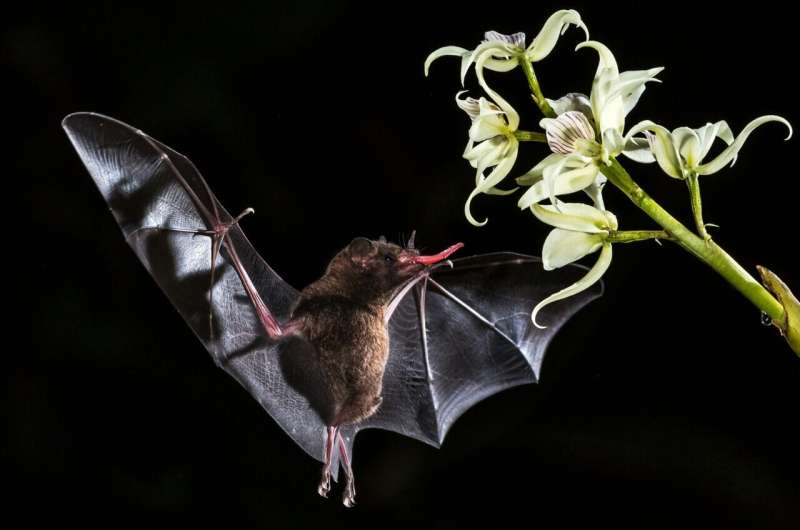This article has been reviewed according to Science X's editorial process and policies. Editors have highlighted the following attributes while ensuring the content's credibility:
fact-checked
peer-reviewed publication
trusted source
proofread
Bat evolution study supports gliding-to-flying hypothesis

In new research published in PeerJ, researchers from the University of Washington, University of Texas at Austin and Oregon Institute of Technology, led by undergraduate student Abby Burtner, have advanced our understanding of the evolutionary origins of flight in bats.
The study, titled "Gliding toward an Understanding of the Origin of Flight in Bats," employs phylogenetic comparative methods to explore the evolutionary transition from gliding to powered flight in these unique mammals.
Bats are the only mammals capable of powered flight, a feat enabled by their highly specialized limb morphology. However, the evolutionary pathway that led to this capability has remained elusive due to an incomplete fossil record. The team's research provides significant insights by testing the hypothesis that bats evolved from gliding ancestors.
The research team analyzed a comprehensive dataset of limb bone measurements that included four extinct bats and 231 extant mammals with various locomotor modes. Their findings reveal that gliders exhibit relatively elongate forelimb and narrower hindlimb bones that are intermediate between those of bats and non-gliding arboreal mammals. Evolutionary modeling of these data offers support for the hypothesis that selection may be strong on certain forelimb traits, pulling them from a glider towards a flyer adaptive zone in bats.
"We propose an adaptive landscape of limb bone traits across locomotor modes based on the results from our modeling analyses," said Dr. Santana. "Our results, combined with previous research on bat wing development and aerodynamics, support a hypothetical evolutionary pathway wherein a glider-like forelimb morphology preceded the evolution of specialized bat wings."
This study not only supports the gliding-to-flying hypothesis but also challenges the traditional view of bat and glider limb evolution. The researchers emphasize the need for future studies to test the biomechanical implications of these bone morphologies and to consider the complex genetic and ecological factors that influenced the evolution of bat-powered flight.
"Our findings contribute to the hypothesis that bats evolved from gliding ancestors and lay a morphological foundation in our understanding of bat flight," Dr. Law added. "However, we stress that additional fossils are necessary to truly unravel the mysteries of this remarkable evolutionary transition."
More information: Gliding toward an understanding of the origin of flight in bats, PeerJ (2024). DOI: 10.7717/peerj.17824
Journal information: PeerJ
Provided by PeerJ





















